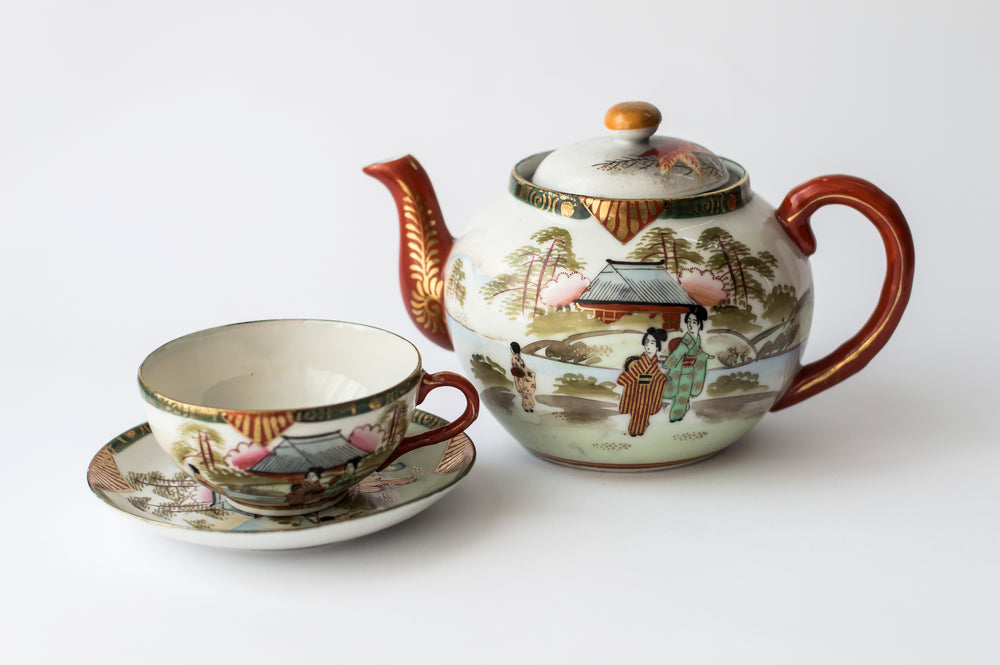Teapots and tea are connected, and the right combination ensures an ideal cup of tea. Teapots are made by potters to bring out the flavours and aromas of the tea, ensuring a delightful cup of tea. Everything about the teapot is carefully considered, from the material used to make it to the way the spout is shaped.
The British are known for their love of tea; it is an integral part of their everyday routine. Since they prefer to drink tea multiple times a day, they keep a good quality teapot in their kitchen to keep their tea warm. Let us learn more about British teapots-
A History of British Teapots
Considering that tea was introduced to the British in the 16th century, teapots may have also been introduced to the people during the same period. Like many objects, a teapot is also a constantly evolving object. Teapots in Britain evolved from simple vessels used for brewing loose tea leaves to intricate works of art reflecting the cultural and social norms of their time. The earliest British teapots were made of silver or porcelain and were influenced by Asian designs brought back by merchants and explorers. During the Industrial Revolution, mass production techniques enabled the availability of affordable ceramic teapots, which became a staple in British households. Today, British teapots continue to be cherished heirlooms, prized for their craftsmanship and role in the British tea-drinking tradition. Designers continue to invent using modern features containing traditional details that have stood the test of time.
Understanding the Parts of a Teapot

Handle
The handle is arguably the most important part of the teapot. If a teapot's handle is well-made, then it is simple to use. If you collect teapots or antiques, you are aware that the handle usually wears out first. It displays how many hands it has passed through or how many times it has been used. The handles should be made of materials that do not conduct heat well because you would be using them to pour the tea. A cane, bamboo, reed, black bamboo, white oak, elm bark, leather, honeysuckle, Akebia vine, driftwood, etc., are a few materials that are good for teapot handles.
Thumbpiece
The thumbpiece of a teapot is located above or on top of the handle. It provides more control over how much tea you need to pour into your cup, supports your thumb, and enables a strong hold.
Sockets
In order to keep the handle stable and in position, the sockets—two tiny pins—assist in keeping it connected to the teapot.
Foot

The foot of a teapot is just like that of a human. It helps the teapot to stay steady and stable. British teapots often have beautifully designed feet in their teapots. Some styles of feet are –
Ball-style feet – This style of feet in the teapots is in the shape of a sphere.
Circular foot – This foot is round in shape and runs continuously around the base of the teapot. It functions as a kind of extension to keep a teapot's rounded bottom standing straight.
Bun-style feet – This style of feet is spherical and flat in shape.
Hoof style feet – This style of feet looks like the hooves of an animal.
Bracket style feet – This is a single foot that is connected to the teapot with the help of a solid piece of cross.
Body
The body of the teapot is where the hot water and tea leaves are placed to brew; it is the hollow component that contains the contents used to make tea. On the other hand, a lot of individuals also choose to keep hot water in the teapot and add it straight to a teabag in their cup. Each teapot will have a unique body shape, size, and volume. Common shapes for the body of a teapot include octagon, round and bell-shaped shapes.
Spout

The spout directs and pours the tea into the cup. The majority of vintage teapots had built-in strainers at the junction of the body and spout. They come in various forms and styles -
Straight Spout - The most popular type of teapot spout is the straight one. This simple tapered spout is helpful for accurately and smoothly dispensing tea. Silver teapots are the most common type with straight spouts.
Fluted Spout – There were aesthetic considerations involved in the design of the fluted spout. The entire body of the teapot is lined with vertical grooves. The Queen Anne Style includes this design.
Panel Spout – This kind of spout features facets or panels all the way up. This gives the appearance of a swan neck or straight spout without altering the piece's main design.
Bamboo Spout – This spout is inspired by bamboo stalks. There is a cultural significance to this type of spout. The spout is cylindrical in shape and has ridges that look like bamboo shoots going upwards.
Figural Spout – Figural spout is a phrase used to describe spouts that are constructed in diverse designs of animals or creatures. Designs of dragons, snakes, elephant trunks, camels and other common animals are frequently used to create the spouts on teapots.
Cover
The cover is situated over the body. It may be taken off to see the teapot's interior. When teapots were originally introduced, their covers were hinged; however, teapots nowadays come with detachable lids.
Shoulders

The shoulder is where the cover rests, and it is often adorned or has exquisite motifs fashioned into it.
Finial
Filial is also known as knop. It is mostly in the centre of the cover and is somewhat subtle. It makes it simple for you to raise the cover. Typically, they are made of ivory, silver, or wood. While some artisans create it in a plain shape, many like to create it in the shape of an animal, bird, flower, or fruit.
Tea and teapots are deeply embedded in the British culture. While the culture of drinking tea continues even today, the teapots continue to evolve according to the taste of modern man.


 Easter 2026
Easter 2026
 Frozen Food
Frozen Food
 Baking
Baking
 Beans, Peas, Soups & Tins
Beans, Peas, Soups & Tins
 Biscuits, Crackers & Cookies
Biscuits, Crackers & Cookies
 Candy / Sweets
Candy / Sweets
 Crisps & Snacks
Crisps & Snacks
 Chemist / Pharmacy
Chemist / Pharmacy
 Desserts
Desserts
 Gravy, Stock & Paste
Gravy, Stock & Paste
 Haggis
Haggis
 Indian Sauces, Paste and Pickle
Indian Sauces, Paste and Pickle
 Jams & Preserves
Jams & Preserves
 Poppy Appeal
Poppy Appeal
 Pot Noodles & Super Noodles
Pot Noodles & Super Noodles
 Scone Mix
Scone Mix
 Gluten-Free / Free From
Gluten-Free / Free From
 Tea Accessories
Tea Accessories
 Teapot & Tea sets
Teapot & Tea sets
 Tea For One
Tea For One
 Sugar & Creamer
Sugar & Creamer
 Tableware
Tableware
 Serveware
Serveware
 Plates & Trays
Plates & Trays
 Bowls
Bowls
 Cups & Saucers
Cups & Saucers
 Mugs
Mugs
 Silverware
Silverware
 Dinnerware - Accessories
Dinnerware - Accessories
 Dinnerware - For Pets
Dinnerware - For Pets
 Victoria Eggs - Hand-Drawn UK Homeware
Victoria Eggs - Hand-Drawn UK Homeware
 Jewelry & Accessories
Jewelry & Accessories
 Sale
Sale
 Christmas Gifts
Christmas Gifts

